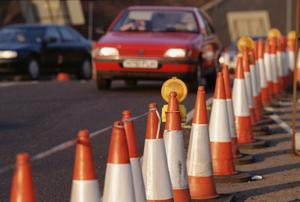Subscribe to our newsletter
Sign up for the latest news & offers from SafeSite
Quick and competitive quotes. Nationwide coverage
Quick quotes. Nationwide coverage
Health and Safety Legislation
Everyone on site has a personal responsibility to behave safely. Under the Health and Safety at Work etc Act 1974, employers have duties to protect their employees from dangers to their health and safety and to protect others who might be affected by work being carried out on site. These responsibilities include proper design arrangements (including planning and risk assessment) and management (including supervision) of the works. Under the Equality Act 2010, there is also a duty to meet the needs of disabled people and older people in the planning and execution of works.
Safety at Street Works and Road Works Code of Practice
The Department for Transport’s Safety at Street Works and Road Works Code of Practice came into force in October 2014. It sets out how utility companies and highway authorities – and those working on their behalf , carrying out work under the New Roads and Street Works Act 1991 – should safely carry out the signing, lighting and guarding of street works and road works on all highways and roads.
The Code, which applies on all highways and roads, except motorways and any dual carriageways with a speed limit of 50 mph or more, is aimed at operatives, supervisors, managers, planners and designers who are responsible for making sure that all street and road works are safe for both site personnel and the public. This includes pedestrians, cyclists and equestrians. It also considers the needs of disabled people and other vulnerable groups such as the elderly, children and those with push chairs.
Your site safety and security responsibilities under the Code
The Code sets out several responsibilities relating to site safety and security, including ensuring adequate pre-planning, carrying out risk assessments, and following correct procedures.
In terms of physical safety and security measures, one of the listed responsibilities relates to how the works are signed, lit, guarded and maintained safely, at all times.
This includes the use of:
Pedestrian barriers – pedestrian barriers should provide a handrail, fixed at between 1 metre and 1.2 metres, which is smooth and rigid, to guide and support those on foot. It must have a visibility panel at least 150mm deep, which may contain the red and white barrier sign, and a tapping rail with a minimum depth of 150mm and a lower edge at ground level or set at up to 200m above ground level. Individual barriers should be able to be joined together to form a continuous barricade to the area where works are being carried out. Barriers must be able to withstand winds of Class C (8.7m/s) blowing from any direction. Additional measures such as using ballast or cross-bracing to secure the barriers may be used.
Security – if it is found that safety barriers are being tampered with and/or separated, which could lead to a safety or security breach, then the site manager has a responsibility to take additional measures to secure them e.g. by using clamps or ties that cannot be removed by hand. Is some case, the site risk assessment may determine that enhanced security measures, such as guarding, are required. This may be the case if the site is going to be left unattended, if a deep excavation is being carried out, or if the works are being undertaken in a high footfall area.
Ramps – when temporary walkways are put in place suitable ramps must be installed to enable pedestrians, as well as people using wheelchairs, mobility scooters or pushchairs, to negotiate kerbs safely. Ramps must be fixed in position and be at least 1 metre wide. They must be strong enough to withstand the weight of pedestrians and mobility scooter users. They must incorporate an anti-slip surface and slope gently enough to enable wheelchair users to mount the kerb easily and prevent mobility scooters grounding.

Road plates – road plates – or trench covers as they are also known – may be required to seal off potentially dangerous excavations, such as manholes, trenches or other obstacles, and allow the safe flow of vehicle traffic, site operatives and pedestrians. If this is known to be a requirement of the works then the use of road plates should be planned in advance and an assessment completed to identify the appropriate size and strength of trench cover to be used. They must be made of a suitable material with an anti-skid surface that meets the type and speed of traffic expected to pass over the plates.
The Department for Transport has produced this advisory leaflet which gives guidance on the use of road plates at road works.
Cones – the size and shape of traffic cones must comply with the TSRGD. Only reflective sleeves that are made in accordance with current British or European standards should be used and these should be kept clean. Damaged cones or sleeves must not be used.

If you would like further information about the safety and security equipment and services we can provide for your site please contact our team for professional advice and a no obligation quotation.
The Department for Transport cautions that failing to comply with the Safety at Street Works and Road Works Code of Practice is a criminal offence and may lead to criminal prosecution in addition to any civil proceedings. Compliance with the Code will be taken as compliance with the legal requirements to which it relates. Further guidance on safe working on highways, including for some situations not covered by the Code, is available in Chapter 8 of the Traffic Signs Manual
We respond in under 30 mins on average (excl. weekends)